Yesterday I was photographing this moose in the Yukon, using my monopod, and that’s when it struck me that this would be a good tutorial topic.
Wildlife photography almost always requires a telephoto lens and this in turn often necessitates the use of some support for your camera. While many people can hand hold their long lenses for brief periods, and indeed there are some times that this is beneficial, the fact is that eventually, you will run out of light in the day, and your shutter speed will fall past a hand-holdable limit. With so much wildlife activity happening at the low light extremities of the day, understanding the best time to use support options such as a monopod or a tripod is essential.
In this post, I will specifically concentrate on using a monopod for wildlife photography and talk about the times when it is beneficial.
Table of Contents
Camera Support: A Three-Tiered Plan
I like to think of camera support as having three tiers. Tier1: Hand holding. Tier 2: Using a monopod and Tier-3: Using a tripod. The stability of your camera increases as you move through those tiers. With increased camera stability, you can use a decreasingly lower shutter speed and still maintain a sharp image of a static subject. If you can use a lower shutter speed, this also allows you to decrease your ISO whilst still maintaining the same overall exposure.
In the vast majority of wildlife photography situations, you’ll be shooting with a wide-open aperture or close to it, so the shutter speed and ISO are going to be the two settings of the exposure triangle that you spend the most time juggling. You want to keep your ISO as low as possible to minimize the noise in the image and maximize the file’s dynamic range, but you don’t want to lower it so much that it makes it impossible to get a sharp shot.

Progressing through the three-tier support system allows you to work at those lower shutter speeds. Of course, the one variable we can’t control is the movement of wildlife. If the wildlife is moving, a slower shutter speed can result in blurry photos of the animals, whether you are using some support or not. In this case, all you can do is wait for those moments of stillness and snap your photos at those precise points.
Using these techniques, I have shot many images in near darkness at 600mm and a shutter speed of anything down to 1/80 of a second. In these edge cases, you have to take control of whatever you can, and one of those things is using the proper support.
Now you might be thinking: “Why don’t I go straight for the tripod then? Why even bother with a monopod?”
That is what we are going to talk about next. Despite being a little less stable than a tripod, there are some situations where a monopod excels and allows you to get photos that you might otherwise have missed with a tripod.
#1 – Photographing Wildlife on the Roadside

I often travel through areas with dense wildlife populations. I’m sure that other wildlife photographers are drawn to similar regions such as the Canadian Rockies, Yellowstone, Grand Tetons or Denali National Park. When I drive through these places, I always keep a telephoto lens attached to my camera on the seat next to me, with a monopod tucked alongside it.
If I suddenly see something interesting, and it’s safe to do so, of course, I’m going to pull over and try to get a shot. Depending on the animal’s species and proximity, I might get out of the car to get a better angle. If I get out of the vehicle (i.e. it’s not a grizzly bear), I grab my monopod.
The main reason I reach for a monopod here is speed. It’s much faster to get set up on a fully extended monopod than it is to try and set up and level a tripod. In these situations, it’s never clear how long you will have to get a shot. It might be just a couple of minutes, but it might be just a couple of seconds. Using a monopod allows me to get something in the bag quickly and rapidly adjust my positioning if the animal moves when it sees me.
Not only is setup speed of a monopod faster, but so is the speed of height adjustment. I’m always adjusting the height of my camera above the ground, seeking different perspectives and watching how the background shifts behind the animal as I move up or down. Adjusting the height of a monopod is considerably quicker than trying to do it on a tripod where you’d need so individually adjust each leg.
If I get the shots in the bag with my monopod and deem there to be a benefit to using a tripod then I certainly might grab a tripod from the car afterwards if the animal in question is being particularly accommodating. But more often than not, these roadside encounters are brief, and the monopod gives me the best support in the shortest period of time.
#2 – Stalking Skittish Wildlife in Dense Brush
This scenario was exactly what I faced when photographing the moose, which led me to create this tutorial. In the Yukon, moose are hunted for a lot of the year, which means they are highly skittish around humans. It isn’t easy to get close to them for photography. Of course, that’s the case for many wildlife, so this is not a moose-specific tip.
Having come across this beautiful moose in dense brush, I first grabbed some shots from a distance to get something in the bag. I was pleased to have my monopod with me because this allowed me to use an extremely long 840mm focal length (Sony 200-600mm + 1.4x extender) in relatively low light, and it allowed me to get set up very quickly. At this point, I was prepared for the moose to run off into the woods almost immediately because this is what usually happens. But this time, perhaps because I’m now using a Sony mirrorless camera which is silent, it didn’t bolt right away.
Side note: My camera gear was also covered in LensCoat camouflage cover, my clothing was neutral green/olive, and my bright parts – face and hands – were also covered in camouflage clothing. All of this helped.

Having gotten a few good long-range shots, I wanted to creep closer. I did this very slowly, placing each foot purposefully between branches, trying not to make a sound. Every 5ft that I gained on the moose, I would stop and take a new shot with a slightly different perspective, never quite sure when it would be my last opportunity, always expecting it to bolt any second.
This is where the monopod was vital, and I’m sure I would not have got such a range of shots with a tripod. There is no way that I could have set up my tripod quietly every few feet, trying to place legs quietly on the ground between a mass of interlocking branches. Not a chance! But with the monopod, I could easily put that single foot quietly on the ground in soft leaves or moss every time, and I never needed to mess around levelling out legs as you would with a tripod. The monopod is much faster and stealthier support when creeping through the brush.
#3 – Covering Long Distances by Foot
While some may wish wildlife to always be visible from the roadside, as in the first scenario, it’s simply not the case. Lots of wildlife can be found with good knowledge and moderate walking, but there are always times when you have to put the work in and cover great distances.
With a huge pack full of heavy cameras and lenses, it can be tempting to leave the tripod at home and tell yourself that you can handhold your lens for short periods in some light levels. But what if mother nature hands you the perfect opportunity, and you find yourself face to face with your subject in low light or for an extended period?
As you know from the three-tier support system, the monopod is the answer. A solid top-of-the-range carbon monopod like the RRS MC-34 weights 1.5lbs, compared to their equivalent tripod, which weighs 3.7lbs. Then factor in the weight of the tripod head, and the difference becomes even more exaggerated.
And no, a monopod is not a solution that you can use for things like long exposure landscape photography where zero camera movement is needed. Still, for wildlife photography, the minimum useable shutter speed between a monopod and a tripod is not that different because you always have to have enough shutter speed to factor in the small movements of the wildlife.

#4 – Covering Long Distances by Air
As baggage weight restrictions constrict further and further every year while airlines offset costs by filling their holds with cargo, photographers are left trying to decide what to leave at home on their big trips abroad. I covered the vast difference in weight between a monopod and a tripod in #3, but let’s finish it up by assuming that you want to use a gimbal head on your tripod.
My preferred choice is the ProMediaGear Katana Jr (read the Katana Junior review here), and even though that is about the lightest on the market, it’s still 2.4lbs. Stick that on a 3.7lb tripod, and you’re at 6.1lbs, compared to the 1.1-1.5lbs of a really good carbon monopod.
Knocking 5+lbs off your packed weight might be important, but also stop to think about it this way: Can you leave the tripod and bring another lens and a backup camera body in its place? Would that be more useful than the tripod if the monopod is all the support you need?
Another thing to consider is that you can bring a monopod on a plane as a carry-on, far more easily than you can a tripod. While the TSA says you can bring a monopod or a tripod, the weight and bulk are much more likely to be the issue. A tripod usually has a much longer folded length than a monopod.
To stick with the RRS example, their 3-series monopod is 21.6 inches when collapsed. But the 3-series tripod is 25.4 inches long when collapsed. That takes the tripod out of the running for carry-on, if that’s a consideration for you.
Interesting Gorilla Photography Monopod Trivia
If you’re planning a trip to photograph mountain gorillas in Rwanda, Uganda or the Congo, you might think that a monopod sounds perfect based on the examples I have shared in this post. The trek to the gorillas can be long and difficult, and when you reach them, you might be following them through a highly dense jungle.
Unfortunately, using a monopod or a tripod while photographing gorillas is not a good idea, and your guides will probably tell you this. Some of the gorillas may interpret them like spears and let’s say they might have some bad memories…
Perhaps there are some places where the option will be available to you based on your guide’s knowledge or specific animals, but I would certainly not rely on this. Speak to your guides about this before you go on the trip, and be prepared to simply use a lens that has image stabilization and is of a weight you can comfortably hand-hold for long periods. A 70-200 f/2.8 is the go-to option, paired with a 24-70 f/2.8 and maybe a 300mm f/2.8 for those that want some tighter portraits.
Best Monopod Head

While we are on the subject of monopods, I also want to flag what I believe to be the best monopod head on the market: The Wimberley MH-100 Monogimbal. This is a tiny gimbal for your monopod, making it much easier to shoot up, shoot downwards, or track fast-moving wildlife when using a monopod. Since buying one of these, it has never left my camera bag! Unlike the typical 2-way tilt-head design of all other monopod heads, this mini gimbal head allows you to balance your camera so that you can remove a hand from it without having to tighten the rotation knob. It’s brilliant! For more information, check my Wimberley MH-100 Monogimbal Review.




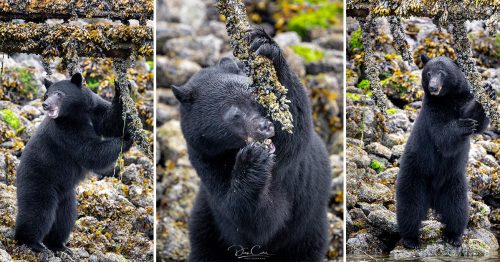

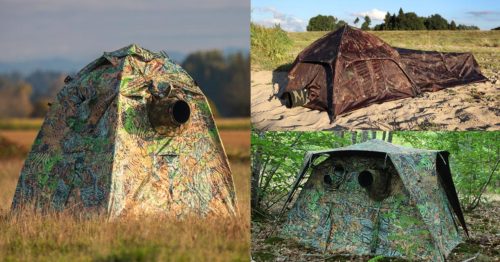
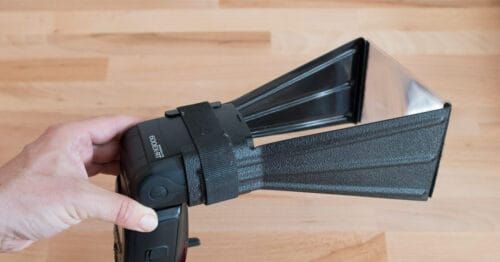
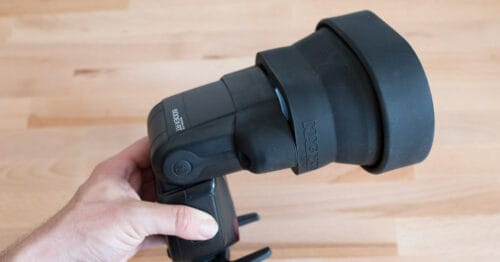
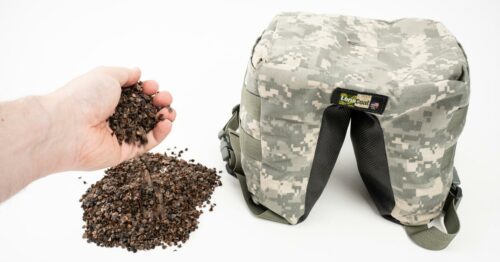
Hello Dan.
Thank you for an excellent tutorial on the benefits of a monopod in the wild! As a Colorado landscape and product photographer, I rarely get “too close for comfort” to wildlife (geese and squirrels notwithstanding;-), I have been fortunate enough to get some images of moose, elk, and foxes at a distance. Since they were farther away, speed wasn’t essential, so a tripod was quite sufficient. That said, I totally agree that a good monopod has its place. (I used to shoot soccer for example, and had a very solid Gitzo monopod which worked well.) I currently use a very nice Leofoto LN-254CT tripod, which does allow monopod conversion. Thanks again, sir, and be safe!
Thanks for the kind words Steve. Love Colorado! You’re in a wonderful place. My best, Dan.
Great article Dan, how are you liking the Sony setup?
Loving it, Gary. The 200-600 is reason enough that people should be considering Sony if they like wildlife photography. It’s a phenomenal lens for the price.
I Have A SIRUi P-424SR Monopod Unused At This Moment. I Have A Velcrow Belt With An Open Type Pouch Facing Upwards Which Accepts My Spring Loaded Rod (Like A Bicycle Pump With A Strong Spring Inside It) Which Can Support My Sony FS7 Shoulder Rig, So Sometime When I Can Get Out I Am Going To Try It With My Sony 200-600 G Lens To See How Stable It Will Be, it’s Made By SHAPE And mine Is Called
” Telescopic support arm 15 mm rod bloc ” Here’s A Link For Anyone Interested.” https://www.shapewlb.com/camera-arms-mounts/ ” I’m On Lockdown At The Moment. Shooting Hand Held With A Heavy Lens Spoils It After A Short Time.
Interesting solution Leslie!
Following your link to the Amazon information about the gimbal, one comment there says there’s a newer model of this on the Wimberley website. Do you know if that’s true?
Hi Dennis. I looked at the comments you are referring to, and I believe you have misunderstood them. The comment says that there is a new version of the clamp on the website, not the entire MH-100 head. The commenter is suggesting that the MH-100 head does not have the latest QR clamp from Wimberley, but actually I disagree with that comment anyway. The MH-100 has its own clamp, and the clamps that are sold individually on the Wimberely website are simply a different product. No pros or cons about them as far as I know.
The MH-100 is itself, a brand new product, having only been launched a few months ago. Wimberley makes a new head about once a decade, so this is definitely a new product for them 🙂
Monopods can be useful in places where tripods are not allowed by law/permit required. You can quickly get a shot before somebody notices. Also in crowds etc they are handy to place among people, and steady a long lens, for things like street performances etc. This is similar to your roadside case. For video work, they can be handy for getting low shots while walking, or going high.
Good points, Barry. Thanks for sharing!